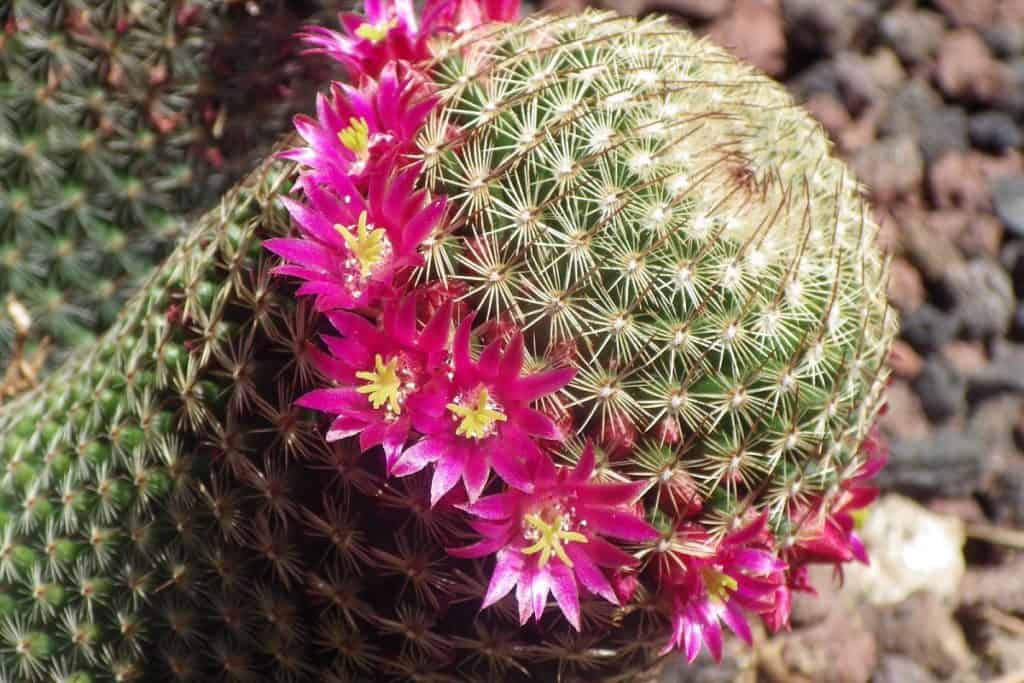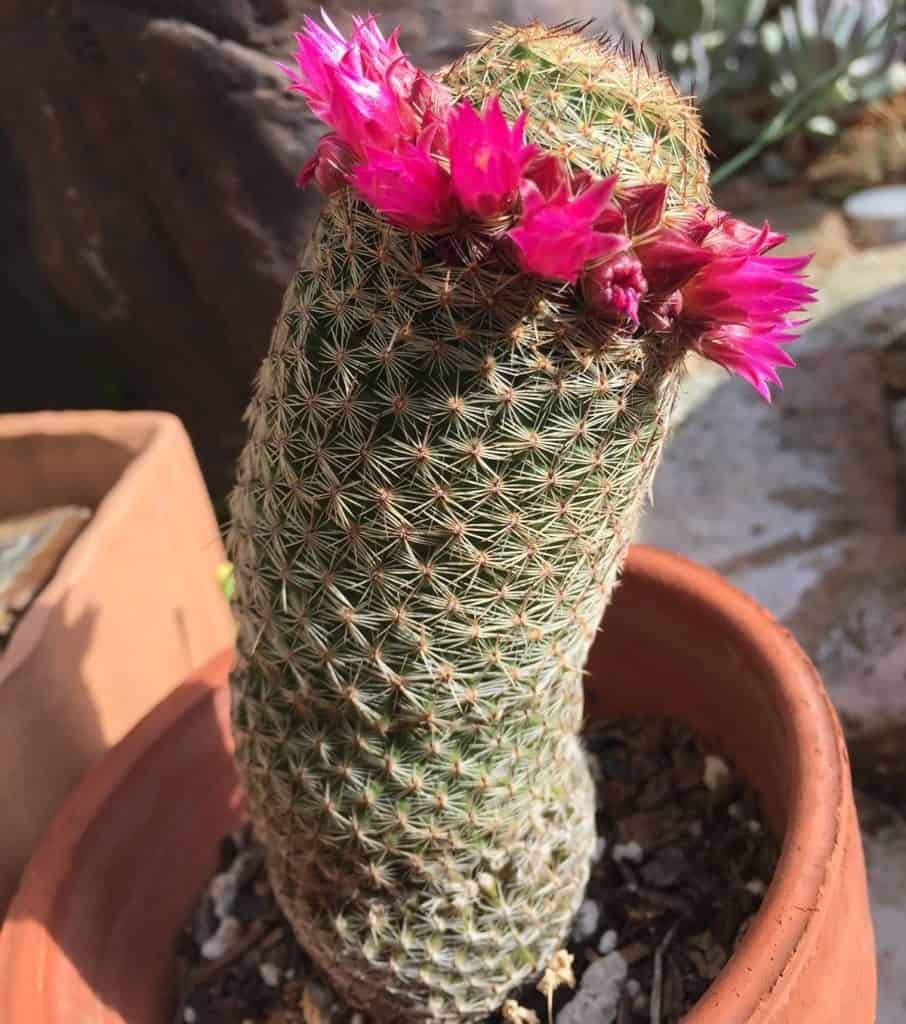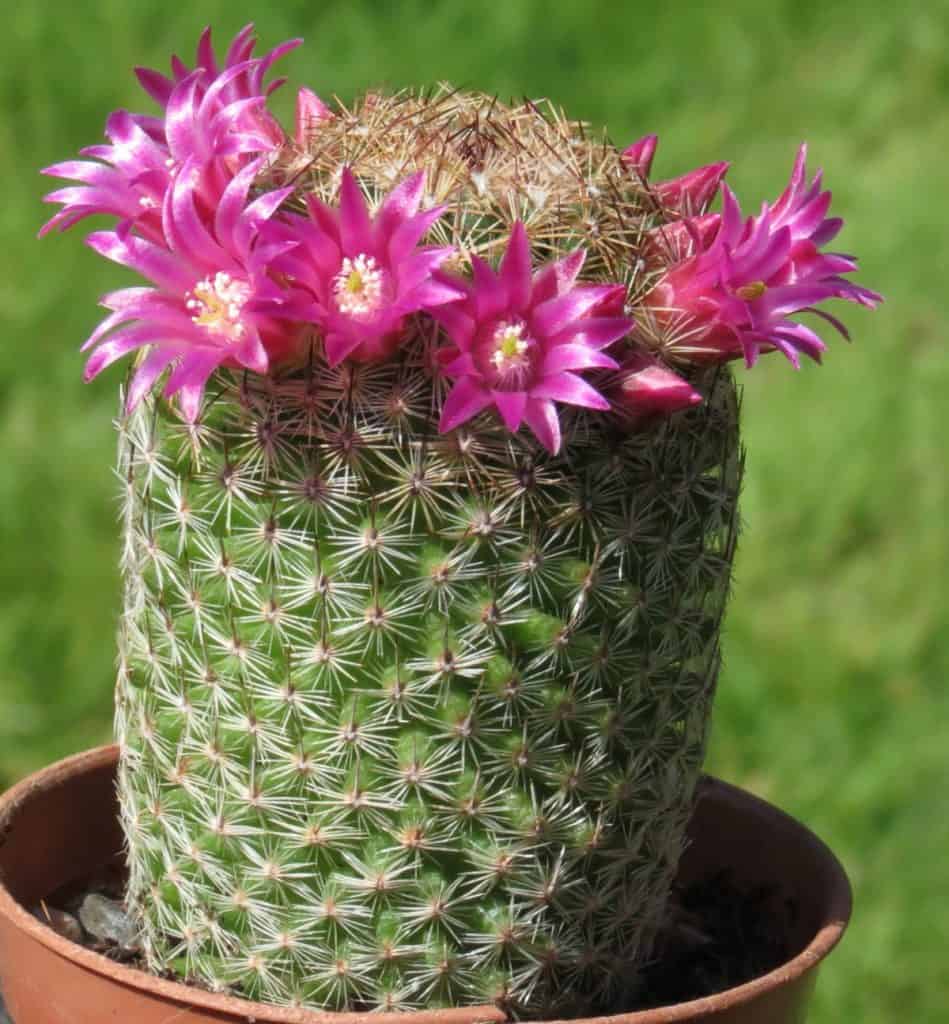Mammillaria matudae – The Cactus So Cute You’ll Want to Squeeze It (But Don’t!)
You read that right! The adorable Mammillaria matudae, also known as the thumb cactus, is a fascinating little plant that will instantly capture your heart. With its plump, cylindrical stems covered in fuzzy white spines, it looks like a tiny cactus creature straight out of a children’s storybook. But don’t let its cuddly appearance fool you – this cactus means business! Let’s dive into the weird and wonderful world of the Mammillaria matudae.

Contents
About Mammillaria matudae
Native to several regions of Mexico, this charming cactus forms tight clusters of fleshy stems that can reach up to 8 inches tall. Each stem is densely coated in soft, radial spines radiating outwards, giving it an adorably spiky appearance. During the spring and summer months, the Mammillaria matudae rewards growers with a crown of vibrant pink, red, or purple flowers blooming atop each stem. It’s a true showstopper!
Related Post:
39 Mammillaria Cactus Types and Care [With Pictures]
How to Care for Mammillaria matudae
Light Requirements
The Mammillaria matudae thrives in bright, direct sunlight. If growing outdoors, ensure it receives at least 6 hours of sun exposure daily. For indoor cultivation, place it near a sunny, south-facing window or use a quality grow light. Gradually introduce more light to prevent sunburn.
Soil Mix
This cactus prefers a well-draining soil mixture designed explicitly for cacti. A suitable blend contains ingredients like coarse sand, perlite, and a small amount of organic matter. You can make your own mix or purchase a pre-made succulent soil from your local nursery.
Water
Water your Mammillaria matudae thoroughly, allowing the soil to dry out completely between waterings. During the winter dormancy period, reduce watering to once a month. Proper watering habits are crucial to prevent rot and ensure healthy growth.
Temperature
These little cacti flourish in warm temperatures between 70-80°F during their active growing season. In winter, they can tolerate slightly cooler temps around 50-60°F but should be protected from frost.

Fertilizer
Feed your Mammillaria matudae every few weeks during spring and summer using a balanced, water-soluble fertilizer formulated for cacti. Avoid fertilizing in winter when the plant is dormant.
Potting and Repotting
When first potting up Mammillaria matudae seedlings or offsets, use a small container with excellent drainage holes. A plastic nursery pot or terracotta pot works well.
As the cactus matures and the stems cluster together, it will need to be repotted every 2-3 years into a slightly larger pot. Choose a container just an inch or two wider than the plant cluster.
Be gentle when repotting, as the spines can easily detach. Water the cactus lightly a few days before repotting to minimize stress. Gently remove the root ball from the existing pot and replant into fresh succulent soil at the same depth it was previously growing.
Pests and Problems
Though generally hardy, Mammillaria matudae can sometimes fall victim to common houseplant pests like mealybugs or root mealybugs. Inspect the cactus regularly and treat any pests promptly with an insecticidal soap or neem oil spray.
Rot is another potential issue if the cactus is overwatered or the soil does not drain freely. Signs include mushy, discolored stems or black patches. Remove any affected areas with a clean knife and replant the healthy stems in dry soil.
With their spiny defensive armor, Mammillaria are not as prone to problems from animals or children as some other household plants. Still, it’s best to keep them out of reach and explain that they are prickly and not to be touched.

Mammillaria matudae Propagation Guide
Propagating Mammillaria matudae is straightforward and rewarding! Here’s how:
- Wait until the warm season when the cactus is actively growing.
- Using a clean, sharp knife, carefully remove a stem from the main plant cluster.
- Allow the cut end to callous over for a few days before planting.
- Fill a small pot with well-draining cactus/succulent soil.
- Plant the stem vertically, burying just the bottom portion in the soil.
- Water sparingly until roots have established, then care for it like a mature plant.
With a little patience, you’ll soon have an adorable new Mammillaria matudae to add to your collection!
